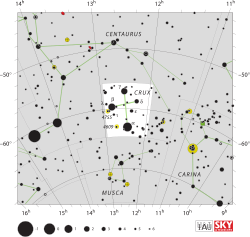GW170814: Binary Black Hole Merger Observed by LIGO/Virgo
Posted: Wed Sep 27, 2017 9:26 pm
Gravitational Waves from a Binary Black Hole Merger Observed by LIGO and Virgo
LIGO | MIT | Caltech | 2017 Sep 27
LIGO-Virgo Global Network Opens New Era of Gravitational Wave Science
Virgo | LIGO Scientific Collaboration | 2017 Sep 27
British Technology at Heart of Gravitational Wave Discovery
UK Science and Technology Facilities Council | 2017 Sep 27
Mapping Black Hole Collisions Gives Astronomers (& Hitchhikers) a New Guide
Rochester Institute of Technology | 2017 Sep 27
New Gravitational Wave Hits Earth; 3 Detectors Zoom In on Its Location
Penn State University | 2017 Sep 27
Gravitational Waves Detected a Fourth Time
University of Maryland | College of Computer, Mathematical, and Natural Sciences | 2017 Sep 27
Three Ears Listen Even More Accurately Than Two
Albert Einstein Institute | GEO600 Gravitational Wave Observatory | 2017 Sep 27
GW170814: A Three-Detector Observation of Gravitational Waves
from a Binary Black Hole Coalescence - LIGO Scientific Collaboration, Virgo Collaboration
LIGO | MIT | Caltech | 2017 Sep 27
[c][attachment=0]BHmassChartGW170814[1].jpg[/attachment][/c][hr][/hr]The LIGO Scientific Collaboration and the Virgo collaboration report the first joint detection of gravitational waves with both the LIGO and Virgo detectors. This is the fourth announced detection of a binary black hole system and the first significant gravitational-wave signal recorded by the Virgo detector, and highlights the scientific potential of a three-detector network of gravitational-wave detectors.
The three-detector observation was made on August 14, 2017 at 10:30:43 UTC. The two Laser Interferometer Gravitational-Wave Observatory (LIGO) detectors, located in Livingston, Louisiana, and Hanford, Washington, and funded by the National Science Foundation (NSF), and the Virgo detector, located near Pisa, Italy, detected a transient gravitational-wave signal produced by the coalescence of two stellar mass black holes.
A paper about the event, known as GW170814, has been accepted for publication in the journal Physical Review Letters.
The detected gravitational waves—ripples in space and time—were emitted during the final moments of the merger of two black holes with masses about 31 and 25 times the mass of the sun and located about 1.8 billion light-years away. The newly produced spinning black hole has about 53 times the mass of our sun, which means that about 3 solar masses were converted into gravitational-wave energy during the coalescence. ...
LIGO-Virgo Global Network Opens New Era of Gravitational Wave Science
Virgo | LIGO Scientific Collaboration | 2017 Sep 27
British Technology at Heart of Gravitational Wave Discovery
UK Science and Technology Facilities Council | 2017 Sep 27
Mapping Black Hole Collisions Gives Astronomers (& Hitchhikers) a New Guide
Rochester Institute of Technology | 2017 Sep 27
New Gravitational Wave Hits Earth; 3 Detectors Zoom In on Its Location
Penn State University | 2017 Sep 27
Gravitational Waves Detected a Fourth Time
University of Maryland | College of Computer, Mathematical, and Natural Sciences | 2017 Sep 27
Three Ears Listen Even More Accurately Than Two
Albert Einstein Institute | GEO600 Gravitational Wave Observatory | 2017 Sep 27
GW170814: A Three-Detector Observation of Gravitational Waves
from a Binary Black Hole Coalescence - LIGO Scientific Collaboration, Virgo Collaboration

